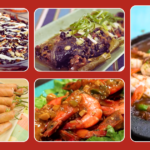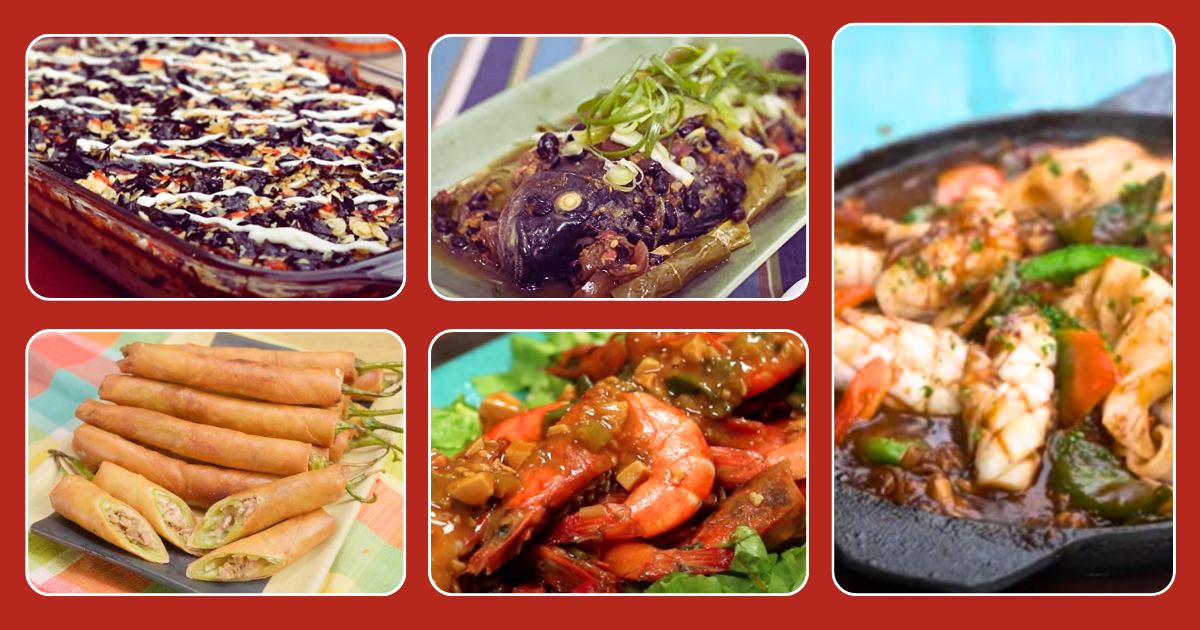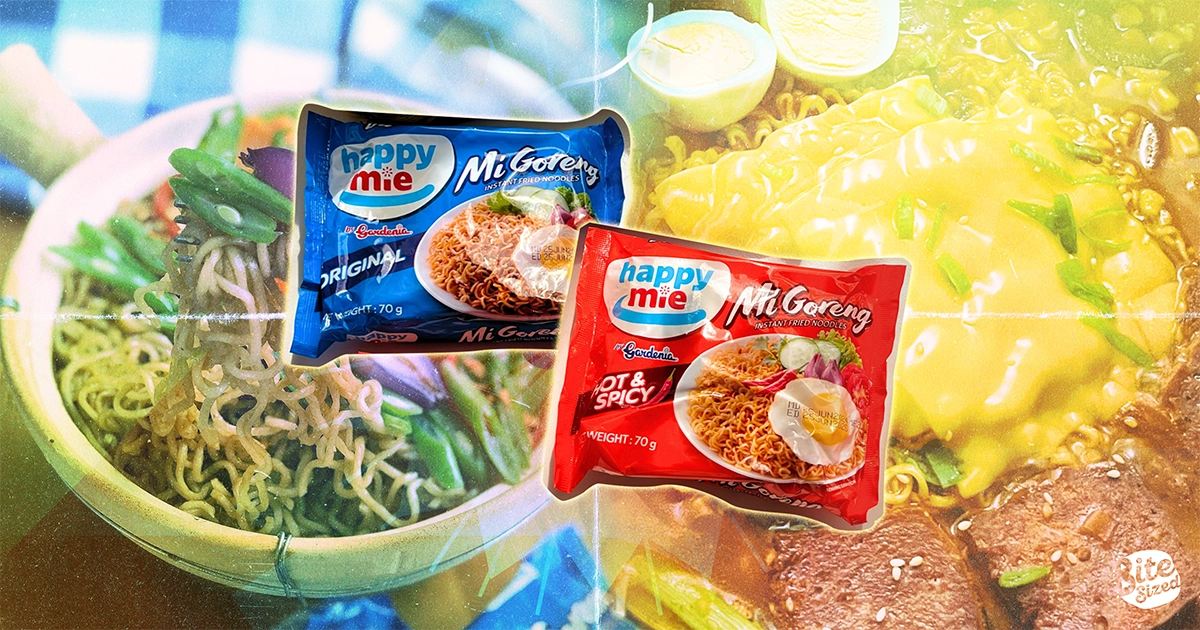Go bananas with just how many varieties of our favorite panghimagas are available in the Philippines! How many of these did you know about?
Lakatan
- Also known as Mapang
- Most common found in Manila
- Grown all over the country
- Has a bright, saturated yellow hue
- Perfect-thickness peel
- Distinct yellow-orange flesh
- High levels of Vitamin A
- Balanced taste of sweet, tangy, and custard-y
- Has a moist texture with a substantial bite
- When frozen and blended for ice cream or smoothies, has a dense texture
Latundan
- Also known as Tundan (Cebu), Turdan (Tagalog), Cantong (Misamis Oriental)
- Also common in Manila
- Most common among dessert varieties around Philippines
- Said to have been introduced from India by French clergyman, “Letondal”
- Fatter shape compared to Lakatan
- Pointier shape towards the end
- Paler in hue
- Thinner peel
- Pale, almost white flesh
- Tangier and more tropical in flavor
- Fluffier, less dense textures
- Slippery and creamy as you chew
- Filipino elders recommend this kind to be fed to babies because of its soft texture
Saba
- Also known as Cardaba, Dippig (Ilocos)
- Short, stubby, fat, and thick
- Cooking-type
- Has a thick peel
- Eaten and cooked similar to plantain
- Said to be the “most important cultivar”
- Wide variety of uses in Philippine cuisine
- Firmer texture
- Is generally less sweet compared to other dessert bananas
- Subjecting it to heat gives a satisfying starchy chew
- Depending on ripeness pre-cooking, can be sweet and tangy towards the center
- Can be eaten raw, somewhat sour
- Sweet, tangy, aromatic flavor and a moist, sticky interior while retaining the meaty, leathery, chewiness on the outside when very ripe
- Has a variety called “Super Giant Saba”
- Has a strong jack-fruit like aroma
- Very sweet, tangy, extremely creamy, and buttery
- The flesh has a pink hue
- Speculated to be the “Datu” variety from Quezon
Señorita
- Also known as Cariñosa, Cuarenta Dias, Arnibal (Negros Occidental), Monkoy (Negros Oriental), Surat-sut (Bicol), Lungsuranon (Surigao)
- Smaller in scale compared to others, measuring in at 3 inches long and 1.3 inches thick on average
- Can be occasionally found in the Metro
- Similar characteristics to Lakatan
- Thin peel
- Yellow-orange peel and flesh
- Flesh has a firm but creamy and more buttery texture
- Has sweet and aromatic flavor, less tangy and more custard-y with a hint of “grassy”
Cavendish
- Most widely-grown and traded banana in the world
- Similar overall shape as lakatan but bigger with a less saturated yellow hue
- Develops freckle-like spots as it ripens
- “Cleanest” and “flawless” looking at its proper ripening making it popular for export
- Generally blander than other varieties.
- Lighter, fluffier texture, but not as creamy
- Not much bite
- Great for freezing due to its light texture that makes it better for a ‘melt-in-your-mouth’ sensation compared to other varieties
Lagkitan
- Also known as katali, botolan (Palawan)
- Common in southern Tagalog region
- Can be eaten raw or cooked
- Pale yellow similar to Saba
- Shape similar to Latundan, becoming rounded around the stem but pointy at the tip
- Tastes like a cross between Saba and Latundan, firm like saba with the thin peel and sweet& tangy taste of Latundan
- Slippery texture
- Occasionally may have seeds in the centers
Bulkan
- Shares many similarities to Lagkitan
- A sweet, tangy, “bubblegum-y” flavor
- Smooth and waxy-creamy texture
- Occasional presence of seeds
- Slightly more vivid yellow peel color as it ripens
- More rounded shape overall, especially toward the tip
Morado
- Also known as raines na pula, Gloria (Tagalog), Tadiao Tumbaga (Sulu), Tinumbaga (Surigao)
- Its name ‘morado’ means purple in Spanish, from its unique hue that is purplish-red
- Uncommon in the Metro
- More common in areas such as Mindoro and Baguio
- Overall larger in size, takes longer to ripen compared to others
- Thick red peel that turns more orange-yellowish tinge as it ripens
- Pale-yellow flesh with a texture similar to Lakatan or Latundan but firmer
- Rounded, creamy with subdued sweetness with notes of pineapple and “grassy” hints similar to Señorita
Inabaniko
- Also known as binendito, domino (Cebuano), oremos (Cagayan Valley), ripping
- Its clusters resembles a closed human fist with tightly packed fingers
- Flesh is similar to Saba with firm, chewy, “meaty” texture
- Tangy taste with “grassy” quality, sometimes having a vanilla flavor quality
Bungulan
- Also known as buñguran (Bicol), buluñgan (Cebu), balañgon (Negros Occidental and Iloilo)
- Starts green and stays green, even when ripe only getting slightly more yellowish around the tips
- Texture and taste are similar to Lakatan
- Has a great balance of sweetness, tanginess, and creaminess with more melon-like, bubblegum notes
- Said to be great for banana cakes and breads as it can overripen easily without notice
Utungan
- Suspected to be “Pelipia” Cultivar which is common in Mindanao
- Said to get its name from how its tips resemble “utong” or nipples
- Similar in form to Saba
- Its flesh resembles a cross between Saba and Lakatan – firm but not as rubbery as Saba with the creaminess of Lakatan when at the right stage of ripeness
- When eaten raw and rips it has a distinct flavor that is sweet, lush, and tangy with pineapple-like notes
Tindok
- Also known as tondoc (Tagalog)
- Described to be the most popular plantain in the Philippines
- Comes as huge, long pieces with pointy ends that resemble nipples
- Has a dense potato-like consistency with tight fibers and has slight tang and sweetness beneath the vegetal flavors when cooked while still green
- Eaten raw and ripe, has a waxy texture that is more dense than chewy
- Deep orange hue similar to Lakatan when ripe
- Carries only a small bit of its vegetal flavor over when it is ripe, like a cross between Lakatan and Señorita
Click to rate this post!
[Total: 16 Average: 4.2]








Leave a Reply